por Melissa Belen-González
My path to where I am now, seemed unreachable from the start. Although I always had an interest in marine biology growing up, my parents continued to discourage this interest as marine biology-based careers don’t make very much money. I attended community college and transferred to my local university due to financial reasons, but continued to pursue marine biology. There was nobody in our entire family who ever pursued a career in any science or research, and my parents lacked the knowledge of higher education to support my interests. I think the first time they realized there was some hope began when I was able to participate in paid internships through the National Science Foundation. I left home for the first time to gain hands-on experience in marine biology on the East Coast. Through this experience, I learned I didn’t want to be in a lab every day, but that I wanted to be outside doing science.

I soon became molded by marine ecology where I was able to connect with the outdoors. Through my undergraduate lab and a change in research interests, I was crawling through the mud of salt marshes. Salt marshes were a type of ecosystem I grew up seeing from the freeway that framed the sun as it set over the ocean, I never knew there was science to be done in them. The remainder of my undergraduate research focused on how predators and prey species interact within the salt marsh. Just like the crabs I used to play with at the seafood markets or help my family boil, the predator I studied was also an aggressive crab. This specific crab, Callinectes bellicosus, although not valued by locals, is an important commercial fishery species in Mexico. It was refreshing to study an animal connected to my culture and one that fellow Mexicans would laugh about when sharing how they had been pinched by the same crab. The site I used to collect or sample crabs had a popular bike trail, which made collecting problematic at times. White American bicyclists would stop and stare, some gave me dirty looks, and other times I’d get anxious that they would call the police on me after prolonged quiet stares. Despite potential setbacks, being in the field makes me happy.

As part of the Society for the Advancement of Chicanx/Hispanics and Native Americans in Science (SACNAS), I was able to bring what I had learned back into my community. With fellow Latine young scientists, we organized outreach events at our local low-income K-12 schools. We also hosted workshops for our university’s Movimiento Estudiantil Chicano de Aztlán and Association of Chicana Activists annual conferences.
“Field work has helped me cope with these difficult times. Being out alone in the middle of an empty forest or salt marsh is where I have been able to reflect.”
Melissa Belen-GonzÁlez

After I graduated from San Diego State University, I moved out to Savannah, Georgia for a year-long fellowship. With the majority of salt marshes removed in California, it can make work difficult to find. Despite the small size of Georgia’s coast, about one-third of all salt marshes on the East Coast are IN Georgia! I teach coastal ecology related classes or labs virtually, indoors, and outdoors. I also had a project that involved making my own traps from re-used materials and walking out in the middle of an empty forest to put the traps in a wetland. However, leaving home was also a difficult decision because in the field of marine ecology I’m often one of the few, if not the only, BIPOC. The lack of overall representation means that even when given the opportunity, BIPOC still struggle. Being on the opposite side of the coast, I also worry about my Abuelita’s Alzheimer’s disease and diabetes.

Field work has helped me cope with these difficult times. Being out alone in the middle of an empty forest or salt marsh is where I have been able to reflect. The beauty of the outdoors is relaxing and something I hope more of our community can have the opportunity to enjoy. Through Latino Outdoors, SACNAS, Latinx in Marine Science, Minorities in Shark Science, and other organizations I hope the future generation is starting to see themselves represented.
I’m the product of Filipino-Mexican first-generation parents. I was born and raised on Kumeyaay Land, specifically San Ysidro and Valencia Park. I faced a childhood of colorism and wasn’t allowed to play outside or enjoy the outdoors. My first introduction to the ocean came from my Abuelita and Lola (Filipino grandma), both who brought me shopping in seafood markets. Ultimately it was the comida of our cultura that gave me the passion to pursue marine ecology and connect with the outdoors.


One comment on “From Seafood Markets To Science”